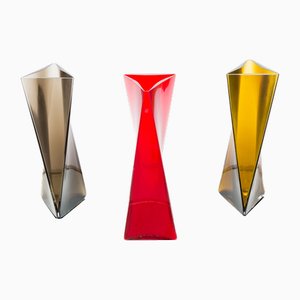
Tadao Ando was born in 1941 in Osaka, Japan. He is a self-educated architect and designer; as a young man, he worked as an apprentice for a number of designers and city planners for short periods of time, all the while studying architecture on his own. Between 1962 and 1969, Ando traveled internationally to study, firsthand, the architecture of Europe, America, and Africa. In 1969, he established his eponymous practice in Osaka.
Ando is known for his uniquely minimalist architecture; he works primarily with anti-seismic, reinforced concrete. His architecture marries large expanses of unadorned concrete walls with wooden or stone floors and large windows; his designs honor natural elements, such as the sun, rain, wind, and land. Notably, Ando cites Le Corbusier as a major influence: “In my mind, I quite often wonder how Le Corbusier would have thought about this project or that,” he has said. Ando’s portfolio includes a variety of residential, cultural institutions, and retail projects, including buildings such as the Row House in Sumiyoshi, Osaka (1976), which earned him the Annual Prize of the Architectural Institute of Japan (1979); the Church of the Light in Osaka (1989); the Teatro Armani in Milan (2001); the Modern Art Museum of Fort Worth, Texas (2002); and 21_21 DESIGN SIGHT in Tokyo (2007).
Ando is the recipient of numerous awards, including the 1989 Gold Medal of Architecture from the Academy of Architecture, France; the 1995 Pritzker Architecture Prize; the 1997 Royal Gold Medal from the Royal Institute of British Architects; the 2002 Gold Medal of the American Institute of Architects; and the 2005 Gold Medal of Union Internationale des Architectes. He has also served as a visiting professor at Columbia, UC Berkley, Harvard, and Yale.

